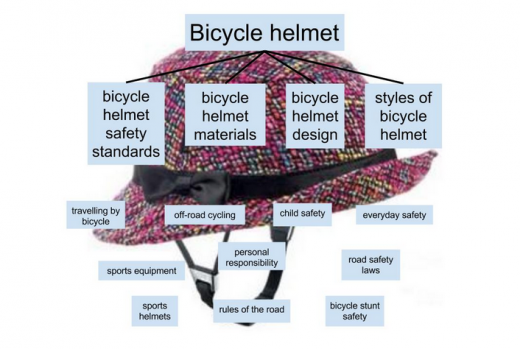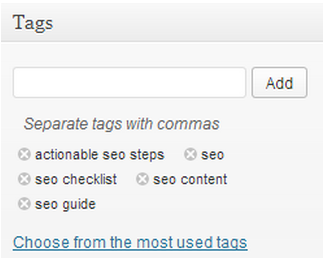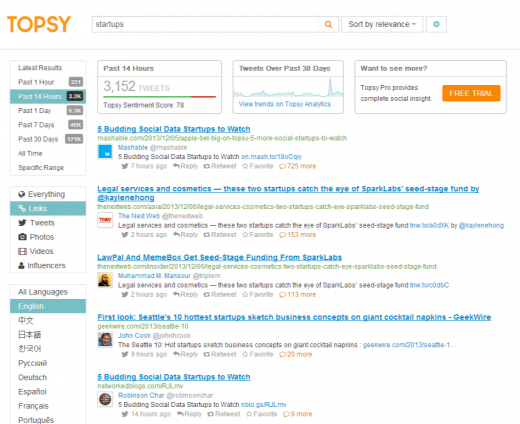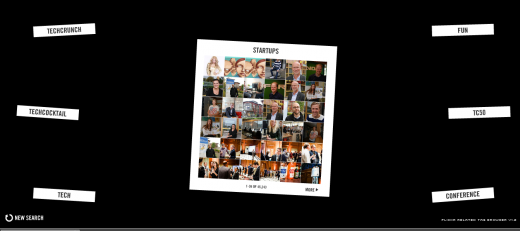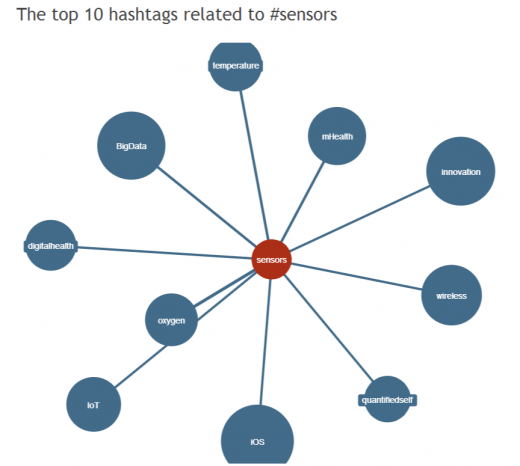WordPress SEO Best Practices for 2015 and Beyond
Credits: http://www.wpexplorer.com/wordpress-seo-best-practices/ authored by Freddy
The SEO landscape of the future is a volatile place. And do you know why? The powers that be aka Google are doing their best to build a better, faster and secure web for all of us. Of course, they stand to benefit ten times more, but what the heck, who gives a rat’s arse? You should.
At least if you own a WordPress site and still want to rank highly (or well) for your terms. You see, to offer an enhanced search experience (and make billions of dollars in profits at some future date), Google must keep updating their search algorithms, much to the chagrin of SEO experts (yes, that includes you).
In the recent past, I could easily score top positions on Google (SERPs – Search Engine Result Pages) by literally “pumping” keywords into my content. What? That’s what was up – that’s how SEO experts were doing it left, right and center. I didn’t even touch link building but my rankings soared high like eagles on steroids.
Then Google cracked the frigging whip, and keyword stuffing was shown the door. Without a doubt my rankings plummeted just like Icarus, but that’s not the point. A new era in SEO was born: the era of relevant and valuable content, alt tags, title attributes and what not.
Still, Google kept the algorithm updates coming, and denied SEOs and web masters all the juicy info that would definitely help your SEO campaign. Today, you just need to step a bit out of line, and Google won’t hesitate hanging you out to dry.
But there is still hope for you seeing Google shows you exactly what you need to do to clinch the best of rankings. It’s these SEO best practices that we’ll outline in this post, so get ready to have fun and build a formidable SEO profile that will withstand the next algorithm shakeup. Here we go…
SEO Best Practices for 2015 and Beyond
Before we get into SEO best practices, allow me to mention a few things you might want to know about WordPress SEO as the perfect beginner.
Firstly, SEO involves two strategies namely on-page and off-page optimization. On-page optimization consists of all optimization activities that you do on your site (or web pages). This includes content creation, adding keywords and optimizing title and meta tags. Off-page optimization is every other SEO activity that involves third party websites such as blog commenting, guest blogging, directory submissions, link building and social bookmarking.
Secondly, we have white and black hat SEO. The former is an SEO strategy that adheres to SEO rules established by Google and other search engines. On the other hand, blackhat SEO involves gaming search engines, which will only land you in hot soup. You should endeavor to build a white hat SEO strategy, and never once think about manipulating search engines using black hat techniques. In simpler terms, don’t try other dirty tricks that are not contained in, say, this resourceful SEO Guidebook by Google.
With that out of the way, let us move on to SEO best practices you need to keep in mind and implement in 2015 going forward.
Carry Out Astute Keyword Research
Keyword stuffing used to work as an SEO technique in the days gone, but today Google frowns upon this practice. At the same time, the keyword as a ranking factor is not dead. Google and other search engines still rely on keywords to rank websites, meaning your SEO strategy should be guided by astute research.
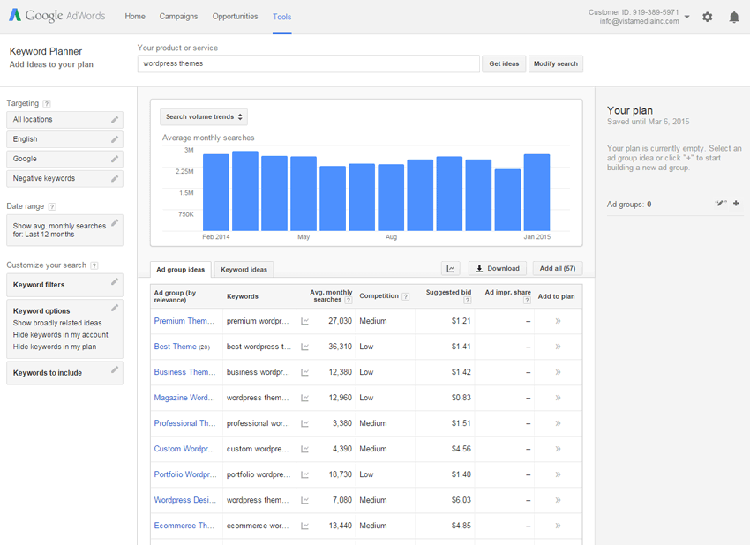
Would you like to rank highly in Google for the phrase ‘WordPress themes’ or ‘WordPress plugins’? A tool such asGoogle AdWords Keyword Planner can help you to determine the competitiveness of your terms as well as derive keyword alternatives to use in your content. You can also use Google Analytics to check the keywords people are using to find your website. Your WordPress site statistics is another a source of keyword ideas.
For each of your keyword, endeavor to derive ten (10) alternatives. For instance, if your choice keyword or phrase is ‘WordPress themes’, you can derive alternatives such as ‘responsive WordPress themes’, ‘multi-purpose WordPress themes’, ‘premium WordPress themes’ and so on.
While doing your research, think longtail keywords. Stretch your keyphrase to a maximum of four (4) words, and you will have a higher chance of ranking well for your single-word keywords. For example, ‘WordPress themes’ is more competitive than ‘responsive multi-purpose WordPress themes’, meaning it will be harder to rank first for the former as opposed to the latter.
Sprinkle a few of these keywords within your content and you should start enjoying better rankings in about a month or so. Yeah, that’s right, SEO takes time – you won’t enjoy the results overnight. Any SEO who promises you the golden numero uno position on Google in a “couple of days” is taking you for a ride. SEO is a long-term and continuous process that lasts throughout the life of your website.
Back to sprinkling keywords in your content, we will talk about keyword density in a moment so don’t sweat it.
Who’s the King of SEO
Content still is. Unique, valuable and relevant content that is. Apart from being the greatest of all SEO ranking signals, high quality content is, foremost, the lifeblood of your website.
A website without content is, well, no website. A website with poor quality content is like a blunt knife – it might do the job but you must exert more force. A website with stale content is dead both to search engines and human visitors. This I understand firsthand because, severally, I went long periods without posting on my own blog. The results? Lower user engagement and lost SEO rankings.
We just mentioned your content needs to be unique, valuable and relevant. What does this mean? First off, your content should be unique because search engines, more so Google, do not entertain plagiarism – or duplicate content. Your content should bring something fresh to the table – it should be unique if you want to rank well.
Without a doubt, you can pull out quotes from anywhere on the internet, but copy-pasting an entire page will only land you in trouble. In other words, eliminate duplicate content on your site including URLs. Google does not see http://yoursite.com and http://www.yoursite.com as the same entity, meaning your rankings are split between the two URLs. You might even get penalized for the same.
I faced this challenge once, and resolved it easily. If you know your way around your server and WordPress folders, adding the following code to your .htaccess file should do the trick:
1 |
RewriteEngine On |
2 |
RewriteCond %{HTTP_HOST} ^example.com [nocase,OR] |
3 |
RewriteCond %{HTTP_HOST} ^www.example.com [nocase] |
4 |
RewriteRule ^(.*) http://www.example.com/$1 [last,redirect=301] |
Replace example.com with your domain name. The above code will redirect all yoursite.com and www.yoursite.com requests to http://www.yoursite.com, meaning search engines won’t be confused. You can also use a technique known as URL canonicalization as explained by Matt Cutts.
The unique content you create should be valuable, not just fluff or filler content meant to trick search engine spiders. Wait…what spiders? Google and other search engines use special type of software (scripts) known as crawlers or spiders to find and index your content.
But since our objective is to rank higher and higher in Google (and Bing and Yahoo!), how do we create unique and valuable content that’s not meant to attract or “trick” the now-smarter search engine spiders? The simple answer is you should never look into creating content for search engines. Instead, create content for your human readers, and search engines will follow. Try your best to provide valuable content because…
Search engines are rapidly developing the intelligence to discern between websites that provide value from sites that create the illusion of value. – James McDonald, Lyons Consulting Group.
Don’t get me wrong. You shouldn’t create valuable content because search engines are getting smarter, create valuable content to help human visitors. It’s what great brands do.
Speaking of writing for human visitors first (and search engines second), your content should be relevant to your target audience. This is one of the reasons why you need to define your target audience from the word go. Create unique and valuable web content that’s relevant to your target audience. Write in their language, the language they understand and if you’ve done your keyword research well, you shouldn’t have a problem adding keywords to your content.
If your content is well written and valuable, your readers will share the same with family and friends, scoring you brand mentions on the web, which if you’re wondering, is yet another SEO ranking signal.
On adding keywords to your content, you should do it naturally – don’t force keywords into your content. This is why having ten (10) alternative keywords is so important. If one keyword does not fit, you have nine (9) other alternatives 
But this makes SEO sound rigid, when on the contrary, its very flexible. After I lost my rankings thanks to keyword stuffing, I devised a new approach that has never failed to yield the desired results since.

I start off with some keyword research, deriving several alternatives to my primary keyword. But instead of writing content first and adding keywords later, I do both at the same time. How? I commit my primary keyword and a few alternatives to memory, and then write away. Provided you’ve researched your keywords as well as your content, the former will fall right into the latter. The keywords will fit right in. I don’t think about the keywords but when I’m done writing, the post is SEO ready. Of course, this is my own personal technique and might not work in your case. And I have perfected the technique over time, so feel free to devise your own technique – just make sure your keywords appear naturally in your content.
How many times should you mention your keyword within your content to make it ready for search engines? 2.5% is the standard keyword density but you can take that to about 4% at any given time. This means if your post is 2000 words long, your primary keyword (phrase) should appear fifty (50) times. Naturally.
Other than that, add your keyword to post/page titles, which quickly communicates to search engines (as well as human visitors) what the post/page is all about. As an illustration, ‘WordPress SEO’ appears prominently in the the title of this post, which tells you this post has to do with WordPress and SEO. If your post/page has headings and/or subheadings, add keywords to these as well. Just keep things natural and you will be okay.
On creating engaging and shareable content, don’t forget to mix it up by adding media such as videos, images, presentations, infographics, podcasts etc. These improve user engagement tenfold and add value to your content, both of which are important to SEO.
Google loves WordPress blogs – regularly updated blogs – so keep your blog section fresh. Make an attempt to update your static web content e.g. about and product pages as well. While it might take some webmasters the coming back of the Messiah to update the content of their static pages, the blog feature of WordPress allows you to feed your website with fresh content on a regular basis. Make use of the blog!
Posting once or twice per week should be enough to earn a decent spot in SERPs in about two months. You can post daily as well, just make sure you don’t compromise quality in the name of quantity, since the latter does not count as much as the former in the new world of SEO.
When creating your posts, add SEO-friendly tags and categorize the posts accordingly. If you use SEO plugins such as WordPress SEO by Yoast, you get fields to add meta description, SEO title, and focus keyword to your post. Utilize these features to SEO-up your post. While optimizing your content, Yoast’s SEO plugin also helps you to determine the SEO score of your article long before you hit the publish button.
Add meta titles, keywords and descriptions to your other pages, not just posts. This kind of information goes in the <head> section of your website, where it’s easily picked up by search engine spiders for indexing.
Note: Meta keywords, descriptions and titles do not discount the place and value of adding keywords to your content.
Write unique and valuable (shareable) content that’s relevant to your target audience. If you need more guidance, be sure to check out these posts:
- How to Write Great Blog Content – ProBlogger
- The Nine Ingredients that Make Great Content – KISSmetrics
- Your Content Marketing Will Fail without These 10 Features – Quicksprout
And as a reminder, never write for search engines; write instead for your human readers – talk to them via your content as if they were standing in front of you. Would you drop unnatural keywords then? I doubt.
On-page SEO involves both creative and technical expertise. As a marketer, you need to create fantastic content for your website that your audience will love. And you want to ensure that your website helps Google (and human users) find and share that content easily. – Justin Deaville, managing director atReceptional.
Image and Video SEO
Before we move on to the next section, I would like to mention a few things about the images and videos you’ll use in your content to reinforce your SEO.
To begin with, adding images and videos to your content is one among SEO best practices that many rarely implement. And that’s just sad because optimized images will bring you great traffic from Google Images and the likes. Videos can garner you traffic, links, mentions and more from sites such as YouTube, Vimeo, Tumblr and more.
We’ve talked about optimizing images for WordPress before, but how do you optimize images for search engines? This is the easiest part. To begin with, you should optimize your images for fast loading. Don’t use heavy images that will only slow down your site. If you need a 650 x 300 featured image for your next post, upload one that’s 650 x 300 and not a pixel more.
Secondly, make sure your images are relevant to your content. Apart from gaining you better rankings, images should enhance your content – their original purpose.
Thirdly, give your images appropriate file names. Is the image about WordPress SEO? Name the image as such – don’t leave your images looking like IMAGE001_2015.jpg. Why? It’s bad for user experience and SEO since search engines don’t see images as human readers do. On top of that, try to squeeze your keyword in the image file name.
Speaking of search engines “seeing” your images, you have to add the ALT tag to your images to make it easier for the spiders. The ALT text represents alternate (alternative) text, the text that’s shown should the image fail to load for whatever reason. The ALT tag has another purpose. It was meant to help screen readers “see” your images. Screen readers are used by visually challenged people to consume content on your site. Search engines spiders use the info contained in the ALT tag to “see” your images as well.
Optimizing images in WordPress is slight work. Just click “Add Media” in your post editor, and choose your image on the screen that appears. Once the image is selected, you’ll notice areas on the right side that allow you to add the title, caption, alt and description. Just focus on the “alt” field, but feel free to fill out the other details if you have the time.
ALT text is great for SEO, makes for valid HTML when utilized, and helps visually challenged readers assimilate your content in it’s entirety. As such, make the ALT text descriptive (and relevant to the image and post) but short.
Use SEO-Ready WordPress Themes and Plugins
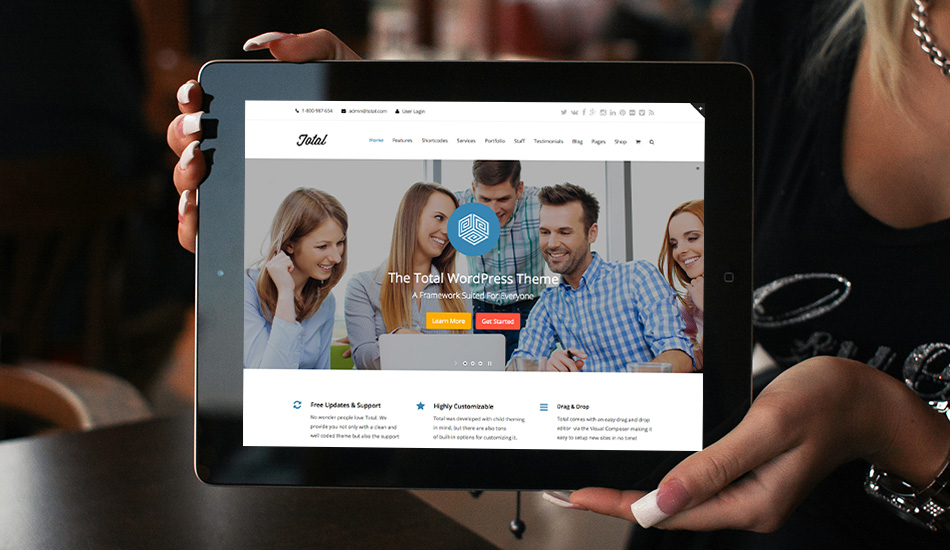
WordPress is so popular today because you can have a website up and running in the time it takes to down a hot mug of coffee. Thanks to WordPress themes and plugins, anybody (and I mean anybody) can build a professional website in no time. But that’s only true if you pick the perfect theme and plugins. In terms of SEO, the WordPress themes and plugins you pick should be SEO-friendly from the word go.
Obviously, you can start with any theme and any set of plugins, but SEO-ready ones give you the head-start you need to take Google by storm. What do you need to look out for when choosing your WordPress and plugins?
Firstly, your choice should utilize clean and valid HTML. If the structure of your theme is all over the place, you are going to have problems not only with your SEO, but also with your design. Look for themes that utilize the canonical URL meta tag. A canonical URL meta what? This is just a fancy term for a certain type of meta tag that stores the top URL of your page. If it’s your homepage, the canonical URL meta tag will store your domain name. If it’s a post, the tag will store the URL of the post.
The theme should also support the correct usage of headings (h1, h2, h3…h6) and title tags. You should also go after WordPress themes that integrate the Open Graph meta tag to enhance social media sharing.
How do you determine all these factors? You can read the developer’s promotional materials, contact them directly or inspect the demo. What to look for? Right click on the demo and choose “View Page Source” or something equivalent. You need to focus on the first part of the code – the area between <head> and </head> tags. Find <meta> tags e.g. <meta name=”description” content=”Some description” /> or <meta property=”og:description” content=”Some description” />.
Don’t mind if your favorite theme does not have these areas though. You can always add them tags later on usingSEO plugins or manually by editing the code. I would go for plugins any day. A theme that does not support page titles and headings is a complete no-no, you know, if such a theme exists in the first place.
SEO-Friendly URLs
Also known as Pretty Permalinks in WordPress, SEO-friendly URLs are great for SEO as well as user experience. For instance, which URL is easier to remember:
- http://www.yoursite.com/article300152
- http://www.yoursite.com/?p=3424
- http://www.yoursite.com/wordpress-seo
Of the three, which URL do you think will “excite” search engine spiders? The third URL on the list is the absolute winner. It’s disheartening to see webmasters using URLs such as http://www.example.com/?p=123 when WordPress makes it so easy to create SEO-friendly URLs (and where there are great plugins like Pretty Link that you can use to create easy to remember external links).
Just go to Settings –>> Permalinks and select Post Name or Month and Name. Do this long before adding content to your blog to avoid broken links. If you had no idea, broken links are bad business for SEO, and if you’d like to learn more, Elegant Themes published a great post on why you should never use the default permalinks setting.
Mobile-Friendly Website
Perhaps a bug bit me because every time I’m on a great website, I always resize my browser to check if the site is responsive. The same bug must have bit someone at Google as well, because if you haven’t noticed, they’ve already introduced mobile friendly labels in search results.
What does that mean? If your website is not mobile friendly, you will enjoy worse rankings than mobile friendly websites. Your readers will also know your site is not mobile friendly long before they get to your homepage, which reduces your click-though rate.
Google recommends adopting responsive web design (RWD) – a web design technique that allows developers to build website following a mobile-first approach. Websites built around RWD techniques will always look and function great on all devices.
If RWD won’t work for your business model, which is unlikely, you can go for a hybrid mobile solution. Just make sure mobile visitors get to your mobile site, and there are no content (or URL) conflicts that will end up messing your SEO. This Google SEO Guidebook has an entire section explaining how to go about it.
Otherwise, just pick a responsive WordPress theme and plugins from the start. Don’t know where to start? Total Responsive Multipurpose WordPress theme is a great choice for many an entrepreneur like you.
Social Media Signals
The growth of social media in recent years has created a new and profitable channel for SEO. Even without struggling, you can see the great traffic potential of social media. It also gives you the chance to build a community around your brand and/or products.
Search engines are using brand and content mentions to determine ranking. The reason behind this approach is simple: If more people like, retweet, pin, stumble etc your content, it must be valuable and vice versa.
Be careful with social media though. You want to open up two-way communication as opposed to talking at your prospects. You need people to engage with your brand to “…improve the pass-along value and online word of mouth.”
Use social media to create your own audience, and work hard to drive conversation and user engagement. The more the mentions, the better.
Beat Your Competition
When you enter your keyword in Google, the first ten (10) websites that appear are your most fierce competitors. To clinch that elusive first position, you must beat them all.
Do you recall that wise saying that goes like keep your friends close and your enemies closer? Take time to study your competition. Get answers to questions such as: Why does number one beat me? What do they do different? Are they implementing white hat SEO techniques that I might be missing?
Perhaps they aren’t as good as you’d imagine – maybe their content is stale for instance. This could be your window of opportunity to get the ranking you deserve. Study the competition and beat them at their own game. A little competitiveness is awesome, and if the reward is better rankings, more traffic and ultimately better conversions, I’m up for the challenge any day. Are you?
Improve Page Load Speeds
If your website takes a millennium to load, you’re losing prospects left, right and center. Further, you’re flushing SEO points down the drain, and they’re hard to come by.
Slow pages lead to higher bounce rates, loss of traffic and customer trust, so decrease your page load time already. The post I’ve linked in the foregoing statement will show you everything you need to do to improve the speed of your WordPress site.
HTTPS as a Ranking Signal
In the introduction, we mentioned that Google is doing everything to build a better, faster and secure web for everybody. By upgrading their search algorithms, they make the search experience better. With their versatileKnowledge Graph, the search engine has grown faster. And now they would like every webmaster to adopt HTTPS to improve the security of web properties.
While HTTPS is not a major ranking signal, Google is still conducting tests and might decide to strengthen it in the near future. Just the other day, they published an article on securing your site with HTTPS. The post outlines the importance of site security, best practices when setting up HTTPS and how to set up HTTPS on your HTTP site. You should be in good hands.
Local SEO
Local SEO is just like customary (organic) SEO. The only difference is you have to go a step further with your local SEO campaign. For instance, don’t forget to add your city/state in title tags, headings, content, URL, and alt text. Additionally, don’t forget to claim a Google My Business page for your outfit. It’s free, so don’t wait.
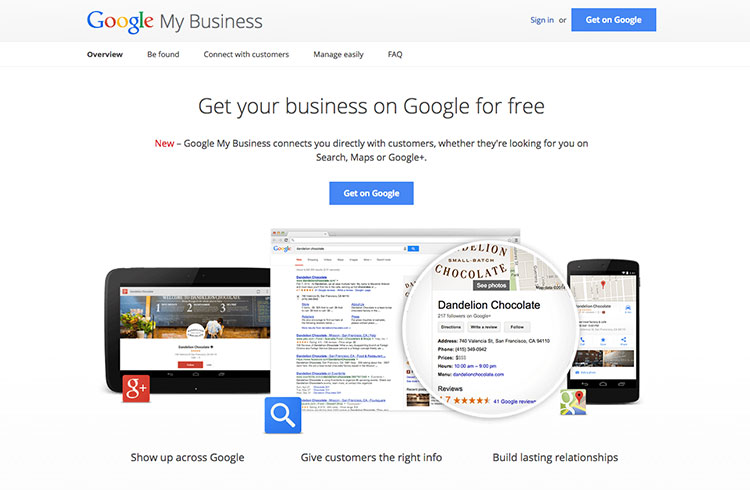
You can learn more about local SEO at Moz or Search Engine Land.
Submit Your Site to Search Engines
As we’ve already established, search engine spiders comb the web looking for content. Then they index the content according to the various SEO ranking signals. Submitting your site to search engines manually improves your chances of getting better ranking faster. Submitting your site manually also reduces your chances of being labelled as spam.
The best part is the process is quick and easy. To submit your site to Google, you can use the Add URL page orWebmasters Tools. To submit your site to Yahoo! and Bing, feel free to use Bing’s Site Submission Page. Don’t be alarmed, Yahoo! search is powered by the Bing Search Engine, meaning you will show up in Yahoo’s search results when you submit your site to Bing.
Sitemaps
A sitemap is literally a map of your site – showing all the pages, categories and more. You should create a sitemap, for both human visitors and search engines. Publish the sitemap on your site, so readers can find your content when lost. You can even link to your sitemap from your 404 error page. You can create your sitemap manually or use a plugin as Google XML Sitemaps.
While search engines can locate the sitemap on your site, you should submit it via Google Webmaster Tools to improve your chances. It’s a smart thing to do, especially with a new website.
Get Some Juice
No matter what people say, link building is an important practice in SEO. This is how link building works. You publish high quality content and site A links to you in the process sharing link juice with you. If it’s an authoritative website, Google labels you with a higher link profile and your ranking goes up. If you go ahead and link to site B, you share the link juice as well. If site B is completely out of your niche (spammy) or contains low quality content, you will only tarnish your rankings and probably get a penalty.
Accept links only from high-quality websites in your niche or from authoritative websites. Link only to high quality websites (content) that adds value to your site.
The future of SEO will be the importance of the link quality. The site that links has to be socially active and have a usable and interaction user base . The importance of the link will be the value of the site which attributes to the social side of the internet. – Nick Anderson, founder of Hostoople.
Learn to build links naturally. If you buy links, Google will find out and punish you. You should endeavor to create awesome content that earns links naturally. Link farming (sowing many links at the same time or within a short period) will only land you in trouble.
That aside, use natural anchor text in your links. Shun the likes of “Click here” and use text that provides meaning instead. Need an example? Just look at the linking pattern we’ve utilized throughout our blog. Finally, if you’d like to link to a website but don’t want to share the link juice, you can use rel=”nofollow” attribute in your links.
Example: <a href=”http://www.somesite.com” rel=”nofollow” title=”Some descriptive title”>Meaningful anchor text</a>
WordPress SEO Tools and Resources
Now that we have SEO best practices out of the way, what are some of the tools you need to push WordPress SEO forward?
Here’s a quick list:
- WordPress SEO by Yoast – A great WordPress SEO plugin that helps you to add meta descriptions, keywords and titles to your content among other things
- Social Media Plugins for social media promotion
- Google XML Sitemaps
- How to Decrease WordPress Page Load Time
- WordPress SEO: How to Rank Higher in Search Engines
- 2015 Search Engine Optimization Best Practices… and beyond
- WordPress SEO Best Practices In 2015
- 5 Essential SEO Techniques To Master In 2015
- 10 Essential WordPress Plugins to Improve SEO & Usability
At the end of the day…
…keep in mind that SEO takes time. After implementing these SEO best practices, you need to allow enough time to see the results. Too bad we don’t have set-and-leave SEO solution yet. Additionally, you have to keep updating your SEO strategy according to industry-wide changes. Don’t forget to follow the established SEO guidelines to avoid penalties. To sum it up, create high quality content and promote your site like a mad man.
It’s our hope that we’ve given you enough fodder; the ball is now in your court. Did we leave out important SEO best practices? Which SEO best practices do you use? Please share with us in the comments. All the best, and may God bless the work of your hands!



